You can’t paint over mold unless you fix the underlying causes and remove the existing mold. If you paint directly over mold, it will continue to spread and grow under the paint finish and eventually cause the finish to crack or peel off.
To paint over mold, fix the mold source (underlying causes), remove the mold, clean the surface, apply mold-resistant primer, apply paint, and seal the finish.
Mold-resistant paint and primer are effective in stopping mold growth, but their efficiency is affected by surface preparation and underlying causes.
Do You Need To Remove Mold Before Painting?
You need to remove mold before painting as the paint doesn’t eliminate the underlying problem. If you apply paint over mold, the mold continues to spread gradually and can cause the paint finish to crack, bubble, or peel off.
Mold creates a barrier between the surface and the paint, causing poor adhesion. This results in the paint coating gradually peeling off or not adhering at all.
The paint finish color shade can be affected by mold and create brown or green patches.
Do Paints Stop Mold Growth?
Paints don’t stop mold growth, they can cover it temporarily, but mold will gradually spread and cause the paint to crack or peel off.
Mold-resistant paints can reduce mold growth on humid surfaces as they are formulated with fungicides, but they don’t guarantee complete protection.
To prevent mold growth fix the underlying causes, such as water leaks, humid conditions, wet surfaces, and ensure proper ventilation. As long as the underlying causes aren’t fixed, mold will continue to grow and no paint type can completely stop it.
How To Paint Over Mold?
To paint over mold, do the following things.
- Fix the Mold Source (Underlying Causes).
- Remove the Mold.
- Clean the Surface.
- Apply Mold-resistant Primer.
- Apply Paint.
- Seal the Finish.
The tools you need for this project are listed below.
- Water bucket.
- Scrubbing brush and scraper.
- Mold-resistant paint primer
- Paint
- Sealer.
- Bleach or vinegar.
- Safety Gears.
1. Fix the Mold Source (Underlying Causes)
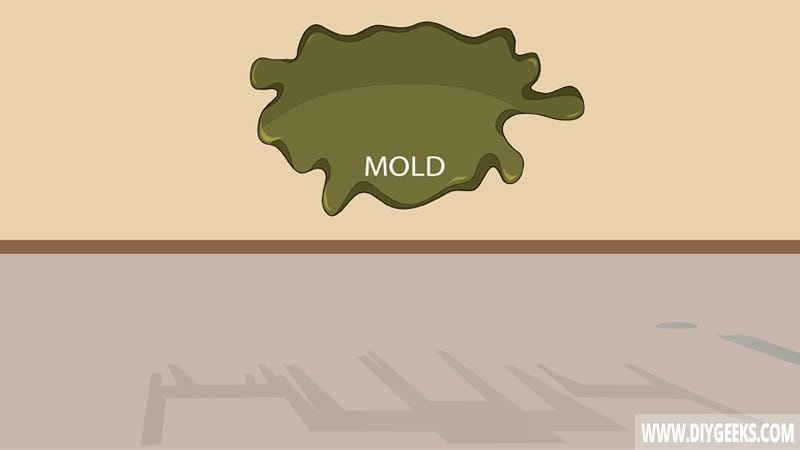
Fix the mold source or underlying causes before applying a paint coating. Common mold sources include water leaks, constant water exposure, high humidity, poor ventilation and condensation. Inspect the affected area, find the issue, and fix it.
If you don’t fix the mold source, mold will continue to spread even if you paint over it.
2. Remove the Mold
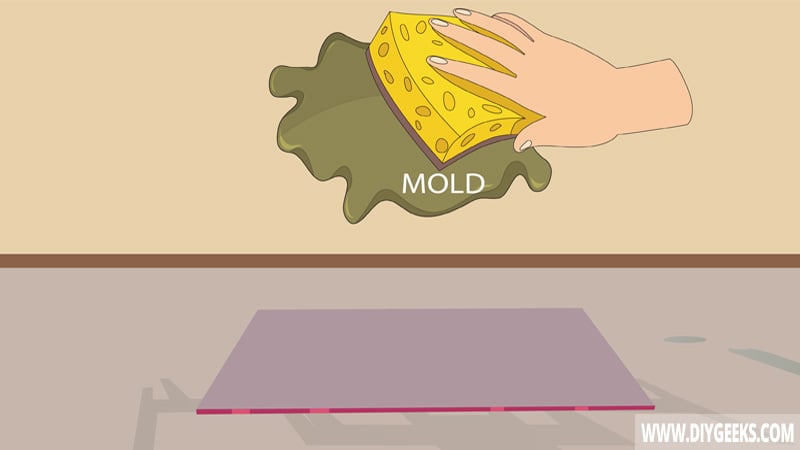
After you find and fix the mold source, remove the existing mold from the surface.
To do so:
- Wear the safety gear and place a drop sheet on the floor.
- Use a scraper to scrape mold from the surface.
3. Clean the Surface
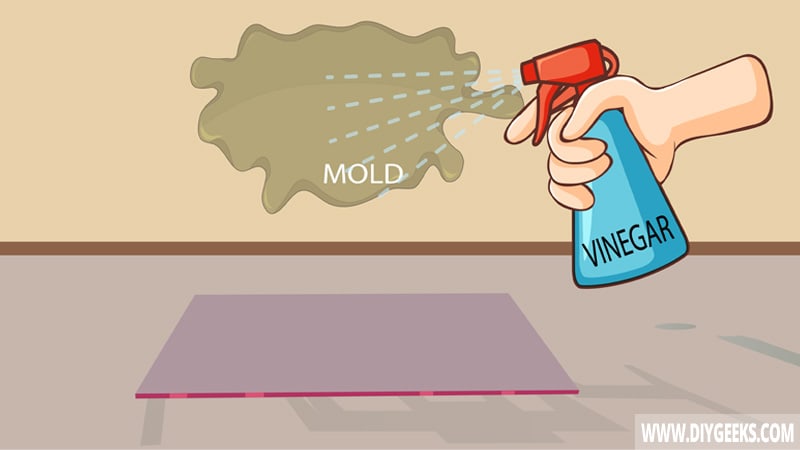
Clean the surface with vinegar, bleach, or household fungicide after removing the existing mold. Fill a spray bottle with vinegar and spray the affected areas.
For porous surfaces, such as wood or drywall, damp a rag with vinegar and use the dampened rag to clean the affected spots.
4. Apply Mold-resistant Primer
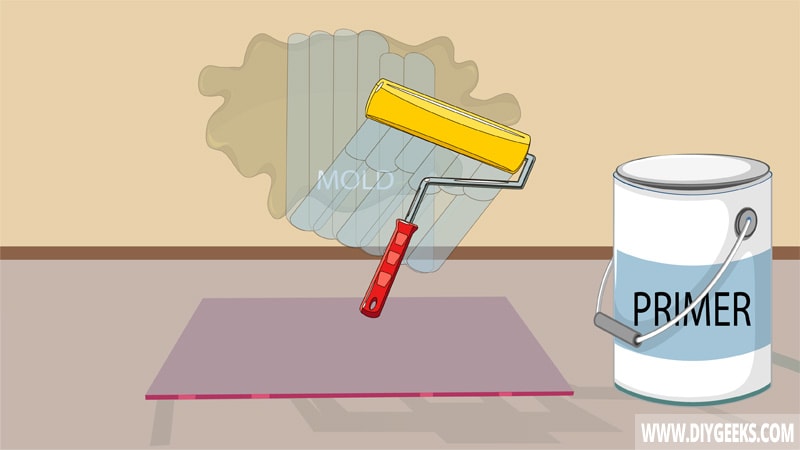
Apply two (2) mold-resistant primer coats over the surface. Wait until one coat dries before applying the next one.
Mold-resistant primer is formulated with additives that prevent mold growth. The primer is used as a preparatory coating to add extra protection before painting over surfaces affected by mold.
5. Apply Paint
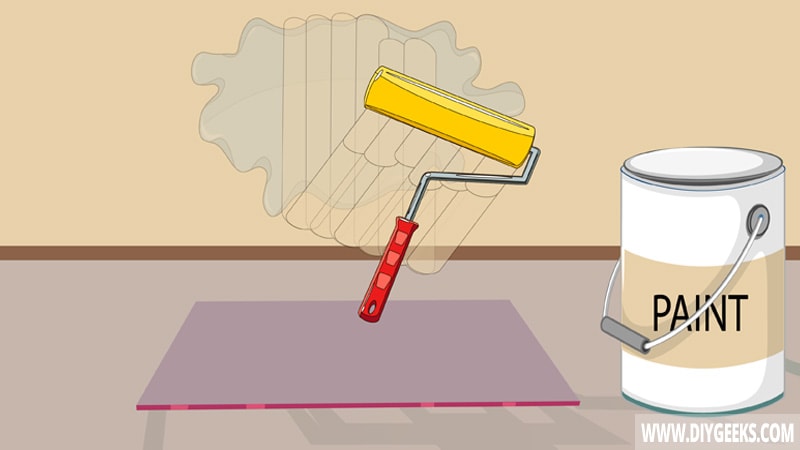
Apply 2-3 mold-resistant paint coats with a paint sprayer, roller, or brush. Wait until one coat dries before applying the next one. If you already fixed the mold source you can use normal paint types.
6. Seal the Finish
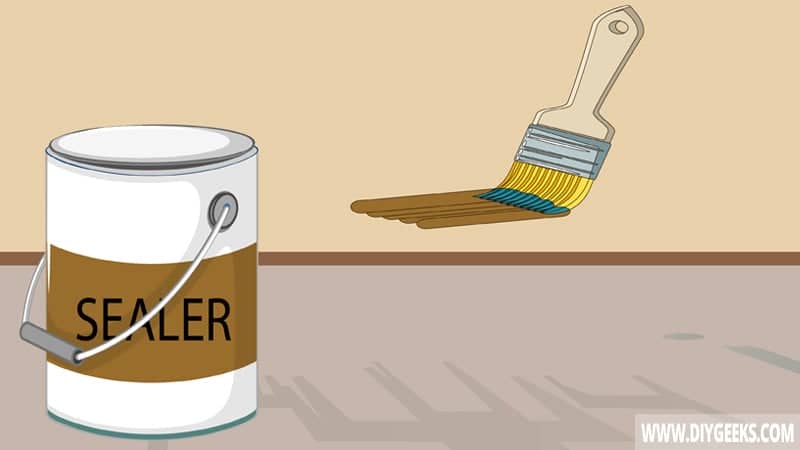
Seal the paint finish with a moisture-resistant sealer, such as polyurethane or varnish. The sealer produces a glossy-resistant barrier and protects the surface from moisture, water, and scratches.
Are Mold-resistant Paint and Primer Effective?
Mold-resistant paint and primer are effective in preventing mold growth, but their efficiency depends on the surface preparation, underlying causes, and product quality.
The surface must be repeated properly by cleaning and removing the existing mold before applying the mold-resistant paint or primer. If the mold isn’t removed, it will continue to spread and grow under the paint.
If the mold’s underlying causes aren’t fixed, mold-resistant paint or primer can’t prevent it from growing. If the surface is exposed to water leaks, high humidity, or poor ventilation, mold will continue to grow even if you apply paint or primer.
The mold-resistant primer and paint efficiency also depend on the product quality. Some paint brands produce high-quality paints that are more effective in stopping mold growth.
Can Mold Bleed Through Paint?
Mold can bleed through paint especially if the mold’s underlying causes aren’t fixed or if the existing mold isn’t removed. If mold isn’t completely removed and the underlying causes aren’t fixed, it will reappear fast through the paint coating.


